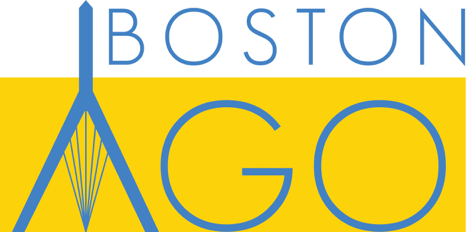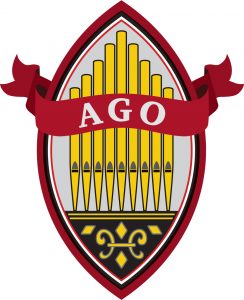54 Walden St, Concord, MA 01742
Updated 2016
![]() Trinitarian Congregational Church was formally established on June 5, 1826. Nine of the sixteen founding members came from First Parish, which they felt was “leaving out the Trinity” as it moved toward Unitarianism. By that December, the Trinitarians started to worship in their partially completed meetinghouse, and our first minister was called in April of 1827. In 1860 the prominent Boston firm of E. & G. G. Hook installed a one manual, eight stop organ in the “Orthodox Congregational Church in Concord, Mass.”
Trinitarian Congregational Church was formally established on June 5, 1826. Nine of the sixteen founding members came from First Parish, which they felt was “leaving out the Trinity” as it moved toward Unitarianism. By that December, the Trinitarians started to worship in their partially completed meetinghouse, and our first minister was called in April of 1827. In 1860 the prominent Boston firm of E. & G. G. Hook installed a one manual, eight stop organ in the “Orthodox Congregational Church in Concord, Mass.”
The growing congregation voted in May of 1898 to build a new sanctuary and corner steeple, and they hired Geo. S. Hutchings of Cambridge to build a two manual, 27 rank organ (No. 441). On December 13, 1898 a packed meetinghouse enjoyed the organ’s dedicatory recital, presumably
played by Mrs. Henry K. Hannah, music director. It is said that the Hook was sold to a church in Boston.
On October 2, 1924 fire completely destroyed the church. A year later the cornerstone was laid for a new building designed by Concord resident Harry Little, who had become nationally recognized for his work on the National Cathedral. On September 28, 1930 the congregation dedicated both its
completed church facility and its new organ: an electro-pneumatic instrument of two manuals and 21 ranks built by the Frazee Organ Co. of Everett. The congregation was led in a musical service
that evening by organist Raymond Robinson (King’s Chapel) and tenor George Boynton (Boston’s Trinity Church). It is interesting to note that the while the organ façade was a focal point in Mr. Little’s design, the pipes were never intended to make music. The organ’s pipes and mechanism were housed in a deep chamber on the far left of the loft (where the music office now sits); the sound wafted through a grille in the thick plaster wall. The choir singers faced the organist at the console, which was recessed in a pit.
Having been deemed musically insufficient as early as the 1940s, the Frazee organ had become functionally unreliable by 1982. Plans for a building-maintenance project included commissioning The Berkshire Organ Co. of West Springfield to replace it with a “new” instrument of two manual and 15 stops. With very limited funds and a short timetable, Op. 139 was assembled using recycled parts and some pipework from the failing Frazee (amongst a variety of other sources) and the vandalized chassis of Geo. S. Hutchings No. 443 (which Berkshire’s David Cogswell described as having been purchased “in a badly disassembled and incomplete state.”) Mr. Little’s architectural facade was retained, and eleven of its largest dummy pipes were replaced with speaking basses from the Great Principal stop. The other 923 pipes and mechanism were crammed into a new chamber outside the sanctuary walls in the parish hall’s “Upper Room”. The console was installed within the revised façade’s woodwork, thus putting the organist’s back to the choir. Dr. Ford Lallerstedt of New York City played the inaugural recital on May 19, 1985.
In 1988 S. L. Huntington & Co. of Stonington, Connecticut made significant tonal improvements to the Berkshire by revoicing and reordering its available musical resources. The rededicated
instrument was celebrated in concert on October 17, 1988 with recitalists Victoria Wagner, Greg Crowell, Daryl Bichel, Earl Eyrich, and Peter Sykes.
By the 1990s the organ’s windchest slider seals had begun to leak prematurely, the hastily rebuilt stop action was becoming unreliable, and many recycled parts were wearing out. However, significant work on the organ had to be delayed until the new Parish Hall wing could be completed
in 2001. Construction dust exacerbated the organ’s problems.
In 2005 an Organ Committee was appointed to study issues around both the organ and the choir loft space, which was too small to accommodate a thriving music program. After three years of research, they recommended that the church reconfigure the back balcony to accommodate both a
new organ and the choir, and that new side aisle balconies be added for handicapped access and increased seating. The congregation formed another committee to study that proposal, primarily its feasibility. Although
they reached the same conclusion regarding the organ and choir space, this new committee discovered other pressing issues in the sanctuary, such as an antiquated heating system. They further determined that the economic climate of 2008 could not support fundraising for a major organ
project that was also somewhat controversial, primarily due to the proposed side balconies. The project was tabled.
In March of 2014 the organ’s long-standing problems became harder to ignore. The Church Council authorized the Moderator to appoint a new Organ Committee that would revisit these issues with “fresh eyes”. The criteria by which they evaluated each potential scenario was its ability to:
• Affirm, sustain, and enhance the musical experience of the congregation in worship.
• Support the congregation’s singing, traditions, and practices in worship.
• Preserve the sanctuary’s aesthetics, authenticity, and character.
• Improve the functionality of the organ and choir space.
• Create a legacy for future generations.
With the endorsement of the Church Council and the Deacons, the Organ Committee unanimously recommended that a new pipe organ and the choir be located in the rear balcony. The façade would return to a purely decorative function, and the front of the sanctuary would be visually unchanged.
The congregation voted unanimously in favor of the motion at Annual Meeting, February 8, 2015. The committee considered proposals from three firms, and a contract was signed with the Noack Organ Company of Georgetown, Massachusetts for a two manual, 25 stop instrument.
The sanctuary renovations began in January 2016. In order to increase space and to meet building codes, the front of the balcony was extended by three feet, spindles were added to the gallery rail, a staircase was removed and an elevator was installed for handicapped access. Greater flexibility of
space has been achieved by making the main balcony floor one level, and by replacing pews with chairs. This design gives the choir room to breathe, to grow. It enables them to worship as part of the larger congregation, to see the preacher and the children, the flowers and communion elements.
Various choral sections can now hear one another, and singers can finally watch the conductor at the console without twisting their bodies away from the congregation. There is now space for both instrumental ensembles and the choir during worship. With sightlines to the pulpit area, the organist
can sense what’s happening during worship, instead of relying solely on verbal cues.
Today the voices of organ, choir, and congregation rise all together from within the same walls in songs of praise, prayer, and celebration.
In the words of hymn writer Fred Pratt Green: May God give us faith to sing always: ‘Alleluia’!

